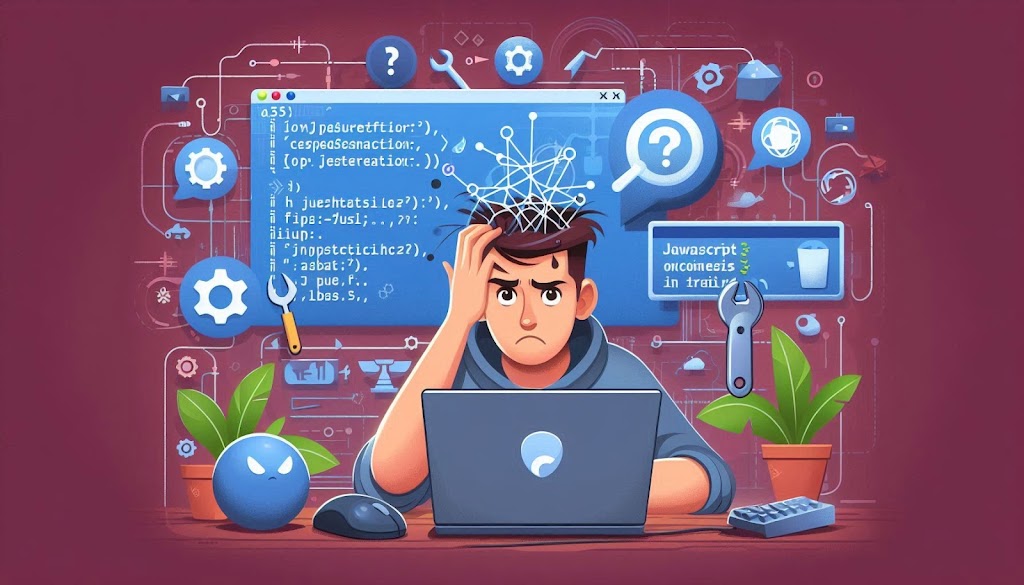Electron is a powerful framework that enables developers to create cross-platform desktop applications using web technologies such as JavaScript, HTML, and CSS. Despite its popularity, developers sometimes encounter an error that reads: “A JavaScript error occurred in the main process.” This error typically arises due to uncaught exceptions in the main process, which is responsible for managing system resources, creating application windows, and executing JavaScript code.
Table of Contents
Troubleshooting the “A JavaScript Error Occurred in the Main Process” in Electron Applications
If you’ve come across this error, don’t worry. This guide will walk you through the common causes and provide step-by-step solutions to fix the issue.
Common Causes of the Error
1. Syntax or Runtime Errors in the Main Process
Errors in the main process file (commonly named main.js or index.js) are one of the primary reasons for this issue. Problems like missing semicolons, undefined variables, or misused functions can trigger the error.
2. Missing or Incorrect Dependencies
Dependencies play a crucial role in Electron applications. If any required dependency is missing or incompatible with the current version of Electron, the error can occur.
3. Invalid Configuration or Settings
Incorrect configurations, such as invalid file paths or missing environment variables, can cause the application to malfunction. Permissions-related issues also fall into this category.
4. Corrupted Application Files
Files within your application’s directory can become corrupted during updates, file transfers, or improper installations, leading to this error.
Step-by-Step Guide to Resolve the Error
1. Check the Error Logs
The first step in troubleshooting is to examine the error logs provided by Electron. These logs often highlight the exact source of the problem.
How to Check Logs:
- Open the Developer Tools using
Ctrl + Shift + I(orCmd + Option + Ion macOS). - Navigate to the Console tab and review the error messages for clues.
2. Look for Syntax Errors or Exceptions
Verify your code for syntax errors or unhandled exceptions. Missing characters, like parentheses or commas, are common culprits. Use try-catch blocks to handle exceptions.
How to Debug:
- Add
console.log()statements to trace your application’s execution flow. - Use
console.error()to log error details.
3. Ensure Dependencies Are Correctly Installed
Missing or outdated dependencies can disrupt the application. Verify that all necessary packages are installed and up-to-date.
Steps to Fix:
- Run
npm installto install missing dependencies. - Use
npm outdatedto check for outdated dependencies. - Update dependencies with
npm update. - Ensure compatibility between your Electron version and installed packages.
4. Check Electron Version Compatibility
Using an incompatible Electron version can cause issues. Make sure your Electron version aligns with your dependencies.
How to Check Electron Version:
- Run
electron --versionin the terminal to identify the version. - Update or downgrade Electron if necessary using
npm install electron@<version>.
5. Fix Path and Permission Issues
Double-check file paths, especially when loading resources or accessing system files. Also, verify that your app has the required permissions.
How to Fix:
- Ensure all paths are correct and properly formatted.
- Confirm that your app has permissions to read/write files and directories.
6. Clear Electron Cache
Cached files from previous builds can cause unexpected behavior. Clearing the cache can resolve such issues.
Steps:
- Delete the
node_modulesfolder andpackage-lock.jsonfile using:rm -rf node_modules package-lock.json - Reinstall dependencies with:
npm install
7. Run the App in Debugging Mode
Running your app in debugging mode can help you trace the source of the issue.
How to Debug:
- Start the app with debugging enabled:
electron --inspect=5858 . - Open Chrome and navigate to
chrome://inspectto begin debugging.
8. Rebuild the Application
If you recently made changes to native modules or dependencies, rebuild the application to ensure everything compiles correctly.
Steps:
- Use the following command to rebuild:
npm rebuild
9. Reinstall the Application
If your app was installed using an installer (e.g., .deb or .dmg), reinstalling it can resolve issues caused by corrupted files.
10. Handle Specific Electron Errors
Errors like “Cannot find module ‘electron'” often indicate missing modules.
Steps to Fix:
- Install missing modules using:
npm install electron-rebuild
11. Revert to a Stable Version
If the error appeared after a recent update, consider rolling back to a previous stable version of your app or dependencies.
Example: Error Handling in Electron
Here’s a simple example of error handling in the main process:
const { app, BrowserWindow } = require('electron');
function createWindow() {
const win = new BrowserWindow({
width: 800,
height: 600,
webPreferences: {
nodeIntegration: true,
},
});
win.loadURL('https://your-app-url.com');
// Log errors in the main process
win.webContents.on('crashed', () => {
console.error('The web page has crashed');
});
win.webContents.on('unresponsive', () => {
console.error('The web page is unresponsive');
});
}
// Catch uncaught exceptions in the main process
process.on('uncaughtException', (error) => {
console.error('Uncaught exception: ', error);
app.quit();
});
app.whenReady().then(createWindow);
app.on('window-all-closed', () => {
if (process.platform !== 'darwin') {
app.quit();
}
});
This example demonstrates how to handle crashes, unresponsiveness, and uncaught exceptions in the main process, making debugging easier during development.
By following the steps outlined in this guide, you should be able to identify and fix the “A JavaScript error occurred in the main process” error in your Electron application. Whether it’s checking logs, verifying dependencies, or clearing cache files, these strategies will help you troubleshoot efficiently.
Remember to test your application thoroughly and use debugging tools to catch issues early. If you need further assistance, feel free to reach out for help!
